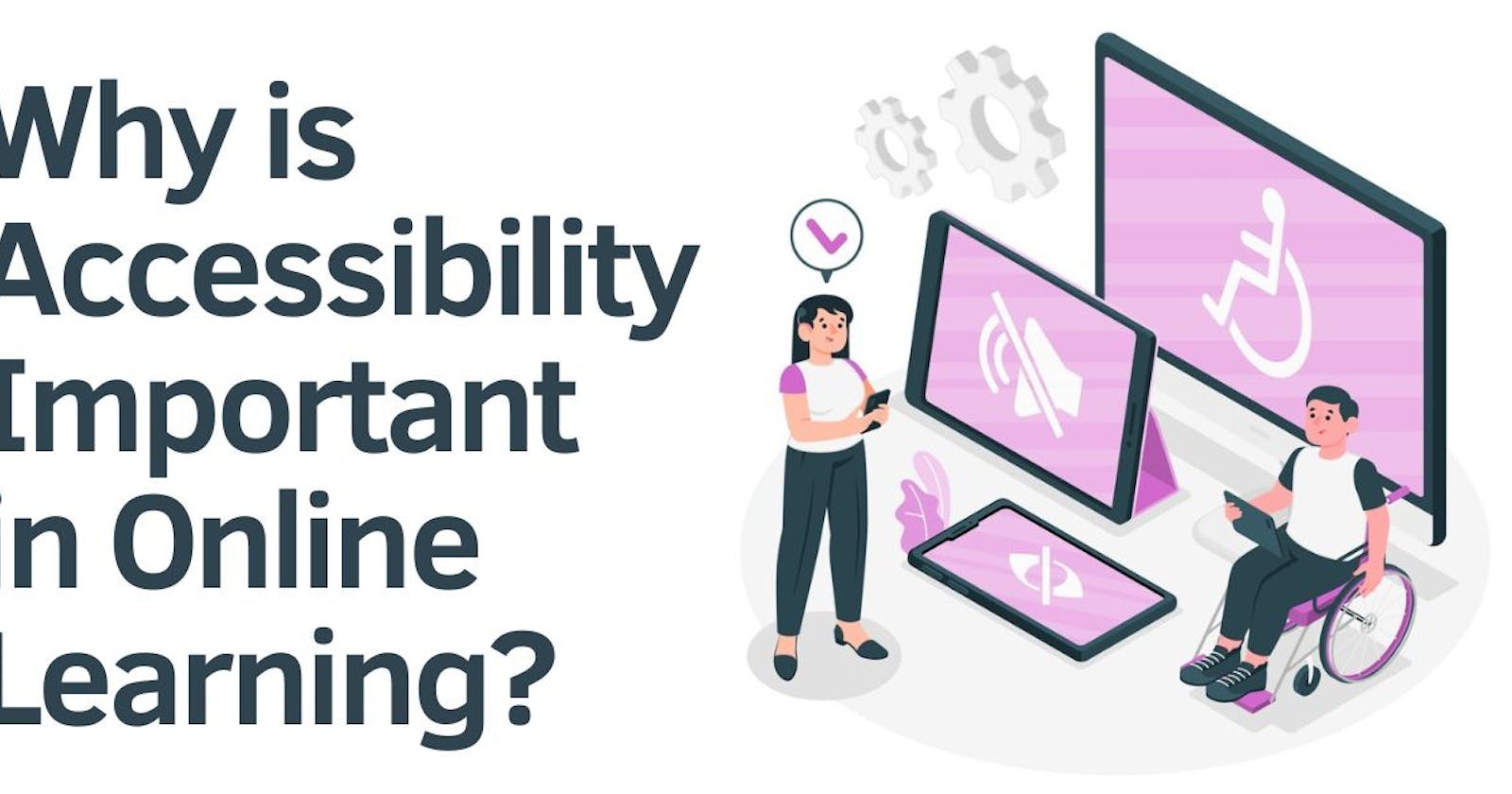We can't say enough about how vital e-learning is in this quickly changing digital world. But we can't use e-learning to its fullest until we make it accessible to everyone. This critical step ensures that all students can gain from online learning, regardless of their physical or mental skills. This blog aims to show how important it is to make e-learning easy to reach and why this should be a top concern for institutions and teachers. By accepting accessibility, we create a more open, varied, and valuable learning environment for students worldwide.
Why is Accessibility in E-Learning Crucial?
Leveling the Playing Field
Accessibility to e-learning is a vital part of making sure that everyone has the same chance to learn. Students with disabilities can get to institution resources and learn at the same speed and level as their peers, thanks to accessibility. This openness to everyone creates a learning space where all students can do well.
Compliance with Legal Standards
Accessibility elearning is not only the right thing to do, it's also the law in many places. institutions can stay out of trouble with the law by following accessibility guidelines. More importantly, they protect the rights of disabled students and make sure that all students have fair access to institution supplies.
Enhanced Learning for All
Accessibility elearning suits all students, not just those with disabilities. Features like subtitles and easy access make the whole experience better for the user, which makes learning more fun and valuable for everyone. It shows how inclusive design makes all kinds of training tools better.
Critical Elements of Accessible E-Learning
User-Friendly Design: E-learning tools are easy to get to and use because they have an unmistakable style and navigation.
Different Formats: By giving things in various forms (like audio, video, and text), you can ensure everyone can access them.
Customizable Features: You can change the word size, background color, and other visual features to suit your needs.
Technologies that help Compatible: Screen readers and other assistive tools must be able to use e-learning systems without problems.
Interactive Transcripts and Subtitles: Interactive transcripts and subtitles are significant for people who have trouble hearing and also help people learn languages.
Bridging the Digital Divide
The digital divide isn't just a difference in technology; it's also a barrier to institutions for everyone. Making e-learning available is a crucial way to close this gap and ensure everyone has the same chance to learn. This method is more than just connecting devices; it focuses on giving all students fair access to learning materials. Accessible e-learning is a crucial part of making education more democratic because it lets students from all walks of life benefit from digital advances in learning similarly.
Enhancing Online Learning Experience
Interactive Content
They are adding engaging features to readily available e-learning, making it more attractive for students. Different learning styles can be met by interactive quizzes and exercises, which not only make learning more accessible but also more fun.
Continuous Feedback
E-learning tools that are easy for everyone to use should always offer feedback. This tool helps students keep track of their work and keep going. It's necessary for a good learning experience.
Role of Educators and Institutions
Teachers and institutions have a big part to play in making e-learning available. They have to make sure that digital material meets accessibility standards so that all students can learn in a safe and welcoming setting. To do this, rules that encourage open e-learning and include inclusive teaching methods and assistive tools must be completed and followed.
Conclusion
Finally, more is needed to say enough about the importance of open e-learning. Making an educational setting that is welcoming, effective, and fair for everyone is necessary. Not only do we follow the law by making e-learning available, but we also improve the learning process for all students. institutions in the 21st century need to be welcoming to everyone.
